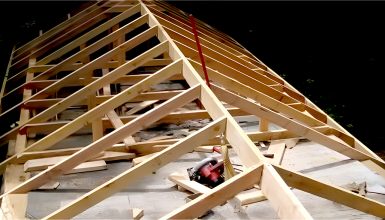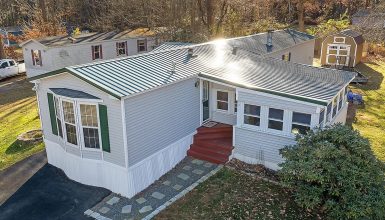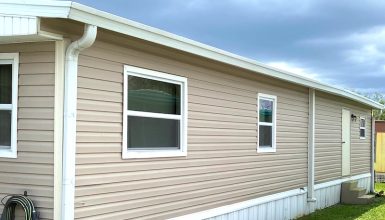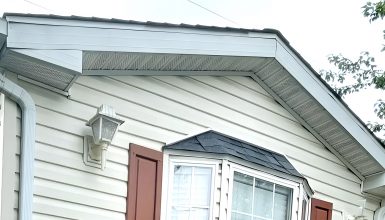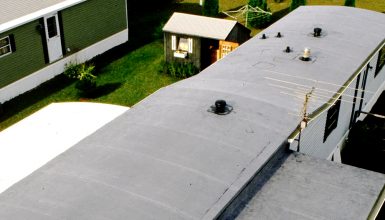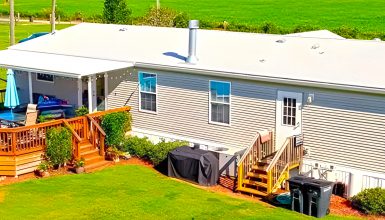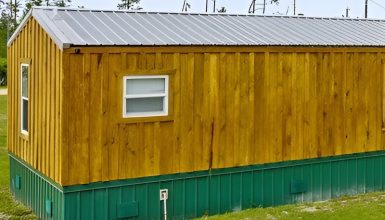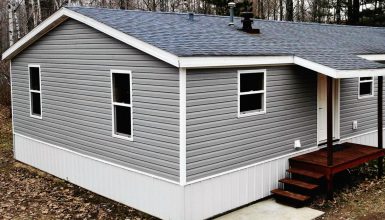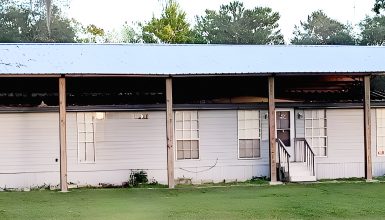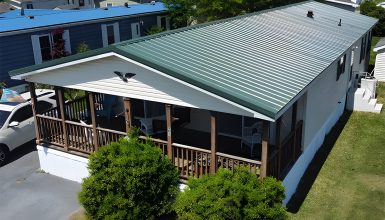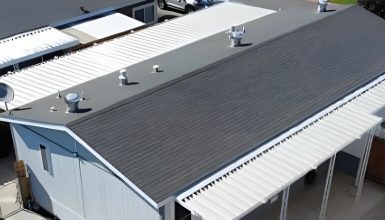Fascia boards are key in mobile homes, but they often go unnoticed. Think of them as the finishing touch on your mobile home’s roof. These boards run along the roof’s edge, covering the ends of the rafters. This isn’t just for looks; it serves a big purpose.
First, fascia boards protect the roof and the home’s interior from weather damage. They block rain, snow, and wind from getting under the roof and into your home. This is crucial for keeping your mobile home in good shape for years.
Then, there’s the look of your home. Fascia boards give it a neat, completed appearance. They frame the home’s roofline, adding to its overall style. A well-chosen fascia board can make a mobile home stand out.
You have several options when picking the right fascia board for your mobile home. Each type has its own set of features, pros, and cons. Let’s dive in.
1. Vinyl Fascia
Vinyl fascia is a popular choice. It’s made from PVC plastic, which makes it strong against moisture and decay. It doesn’t warp or rot, which is excellent for any home. Plus, it’s pretty easy to install. On the upside, vinyl is low-cost and needs little upkeep. Just a clean now and then. The downside? It might not hold up in extreme weather, and the color can fade over time.
2. Aluminum Fascia
Aluminum fascia is a tough cookie. It stands up to harsh weather and won’t rust or rot. It’s a bit pricier than vinyl but worth it for its durability. Aluminum fascia is low maintenance and comes in various colors. But, it can dent, and the color might dull over the years.
3. Wood Fascia
Wood fascia brings a classic, natural look. It’s perfect if you want that traditional style. You can paint or stain it any color. The catch? Wood needs more care. It can rot, warp, or get pest damage. Regular painting and treating are needed to keep it in top shape.
4. Composite Fascia
Composite fascia is a blend of wood chips and plastic. It gives you the look of wood without as much upkeep. It’s resistant to rot and pests. The downside? It can be more expensive than wood or vinyl. But for many, the long-lasting and low-maintenance features make it worth the cost.
5. Fiber Cement Fascia
Fiber cement fascia is solid. This fascia is made from a mix of wood fibers, sand, and cement. It’s fire-resistant and holds up well against rot and pests. It can be heavier and more expensive, though. Also, you might need pros to install it due to its weight.
6. PVC Fascia
PVC fascia is similar to vinyl but is made of polyvinyl chloride. It’s lightweight and super resistant to moisture and decay. Easy to work with, it’s great for DIY projects. PVC is also low-maintenance. However, it can be more expensive than vinyl and might not have the same range of colors.
Factors to Consider When Choosing Fascia Boards
Choosing the right fascia board for your mobile home is more than just picking a material. There are several factors to think about. Let’s break them down.
1. Climate and Environmental Considerations
Your local weather plays a big role. In a wet, rainy area? You’ll want something that resists moisture, like vinyl or PVC. Live somewhere with lots of sun? Look for materials that won’t fade quickly. And in windy or stormy regions, durability is critical. Think aluminum or fiber cement.
2. Budget and Cost-Effectiveness
Your budget matters. Vinyl and PVC are generally more wallet-friendly. But remember, sometimes spending more upfront on materials like composite or fiber cement can save you money in the long run. They often last longer and need less maintenance.
3. Maintenance Requirements
How much time and effort can you put into upkeep? The wood fascia looks great but needs more care, like painting and treating. On the other hand, materials like vinyl, aluminum, and PVC are pretty much ‘install and forget.’ They just need a simple clean now and then.
4. Aesthetic Preferences
What style are you going for? Want a modern look or something more traditional? Wood gives a classic feel, while aluminum and vinyl offer a more contemporary look. Also, consider colors and finishes. Some materials provide more options than others.
So, think about your area’s weather, your budget, how much maintenance work you’re up for, and how you want your home to look. These factors will guide you to the fascia board that’s just right for your mobile home.


